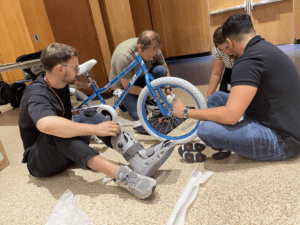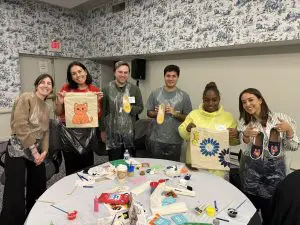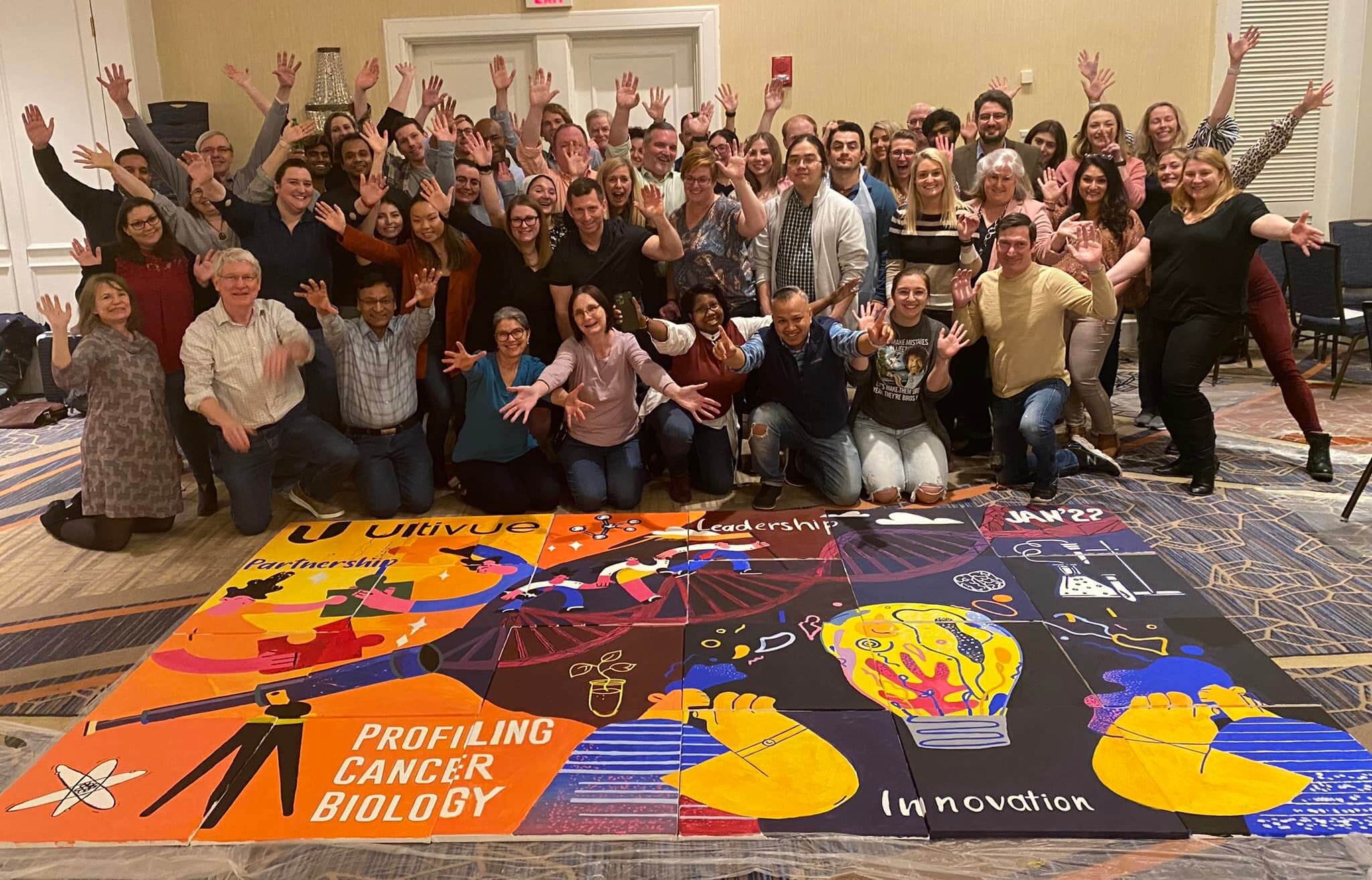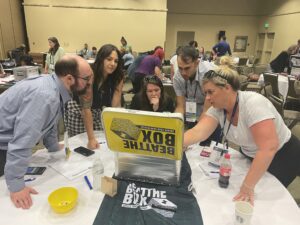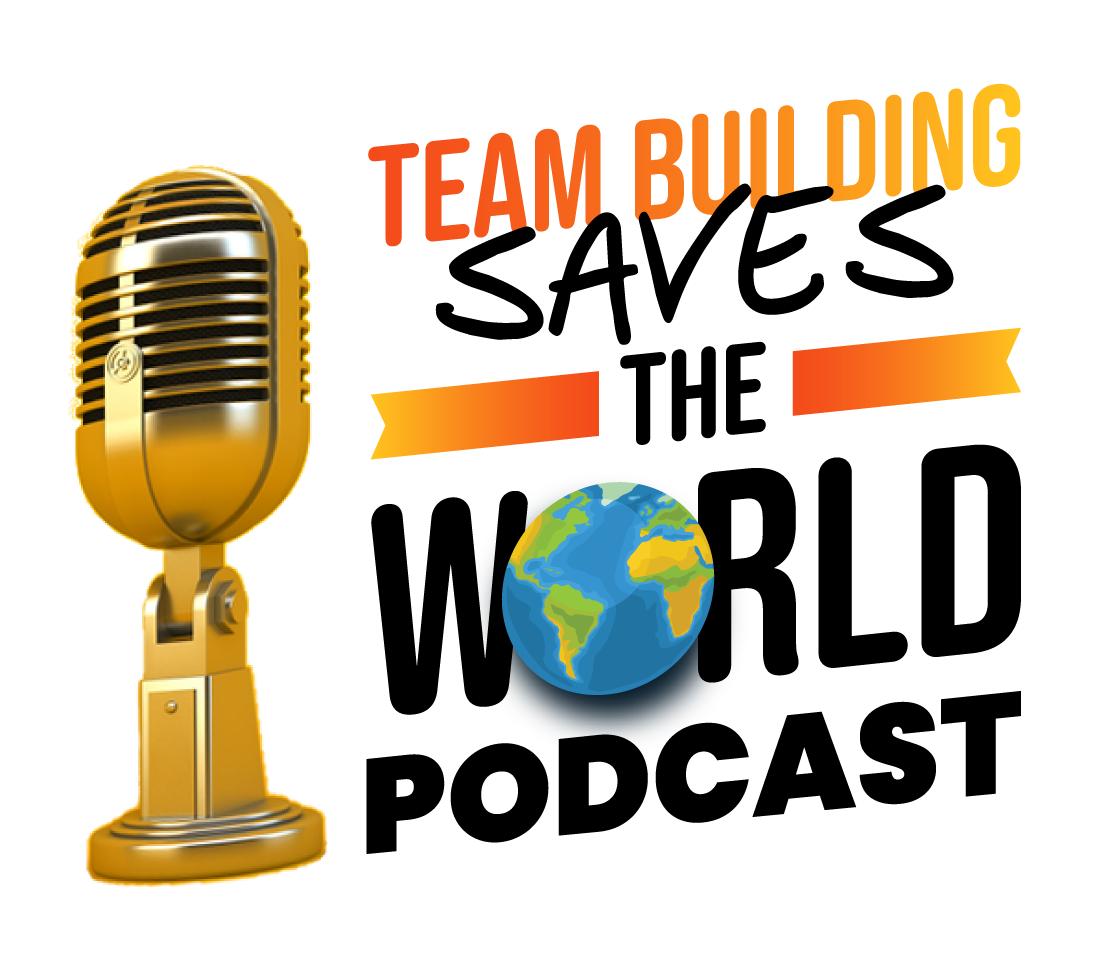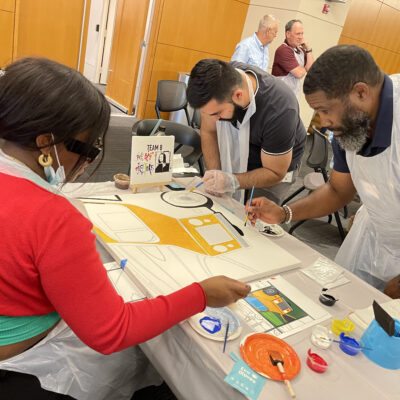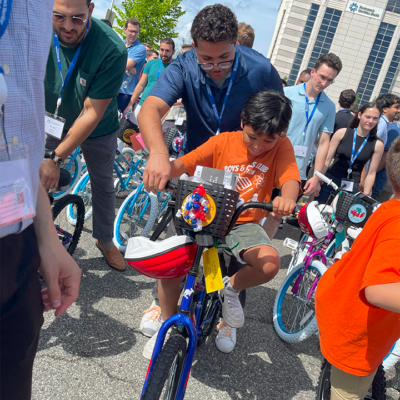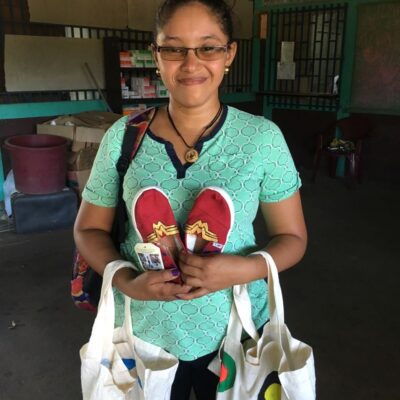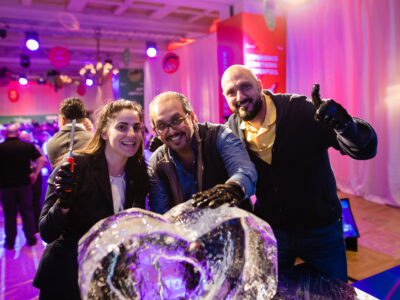As TeamBonding’s Creative Director, I get asked all the time: what’s the secret to building a culture where ideas actually flow? My answer is always the same: creativity isn’t just for artists, designers, or “the creative team.” Creativity in the workplace is a powerful business tool. It’s how you solve problems, spark innovation, and make your company a place where people actually want to work.
The truth is, it lies in inspiring creativity. Workplace culture doesn’t just happen by accident. It’s built. It’s nurtured. And when leaders put intention behind it, the results are incredible: more engagement, stronger collaboration, and employees who feel motivated to do their best work.
Today, I want to share why creativity matters so much at work, what it really looks like in action, and how you can foster it within your own team. I’ll be weaving in a little behind-the-scenes perspective from my world at TeamBonding, where I’ve watched creativity completely transform teams in real time.
Why Is Creativity Important at Work?
Let’s start here: why is creativity important? Because the challenges businesses face today don’t have one-size-fits-all solutions. Technology is moving fast, hybrid work has changed how teams connect, and industries are shifting constantly. If you don’t have a culture that values creativity, you risk falling behind.
For me, the importance of creativity clicked years ago during one of our charity team building events. The group walked in tired, skeptical, and (let’s be honest) not thrilled about “another work activity.” But as they started working together to build bikes for kids, you could see the spark happen. Someone had an idea about how to organize supplies more efficiently. Another person added a fun twist with decorations. Before long, they weren’t just building bikes. They were building energy, laughter, and momentum.
That’s the power of creativity in the workplace: it turns disengagement into collaboration, and “just another task” into something meaningful.
When companies prioritize creativity, they:
- Stay more agile when challenges pop up.
- Build stronger bonds between employees.
- Spark new ideas that can fuel innovation and growth.
And the research backs this up. According to a global Adobe study, 82% of companies believe there’s a strong connection between creativity and business results. Creativity isn’t fluff. It’s a competitive advantage.
Is Creativity a Job Skill?
This is one of my favorite questions: is being creative a job skill? The answer is yes, but with a twist. Creativity is a skill, but it’s also a mindset. It’s something you can practice and strengthen, just like communication or leadership.
Personally, I didn’t wake up one day and think, “I’m a Creative Director, so I’m naturally overflowing with ideas.” I built this skill. My career in event production and marketing forced me to flex my creative muscles daily by solving last-minute challenges, designing experiences that felt fresh, and finding ways to make every event unforgettable. Over time, that practice turned into confidence, and that confidence turned into results.
The same goes for teams. When we run programs where people have to solve puzzles, improvise a skit, or build something together, I always hear the same thing: “I didn’t think I was creative, but I surprised myself.” That’s because creativity shows up when you give people the right space to explore it.
So yes, creativity is a job skill and it’s one worth developing at every level of your organization.
How to Foster Creativity in the Workplace
So, how do you actually go about inspiring creativity? Workplace environments should help teams thrive! Here are a few strategies I’ve seen work time and time again:
- Encourage psychological safety. People need to feel safe to share ideas without worrying about being shot down. Creativity thrives when employees know their voices matter.
- Mix up the routine. Sometimes, all it takes is a change of scenery or a new activity to spark fresh thinking. That’s one reason our off-site and experiential team building programs are so effective.
- Create collaborative experiences. When teams solve problems together (whether through a charity event, an escape game, or a culinary challenge) they build trust and learn how to think differently.
From my perspective, this last one is huge. I’ve seen entire teams light up during hands-on programs, where suddenly the “quiet” employee becomes the one with the breakthrough idea. That doesn’t happen in a regular staff meeting. It happens when you create a space designed for creativity.
And fostering creativity isn’t limited to team building. Google famously allowed employees to use “20% time” to pursue passion projects. This was an idea that led to Gmail and Google Maps. You may not have the same flexibility, but the principle still applies: give people room to explore, and innovation follows. Even a small pilot program, like dedicating one Friday a month to creative cross-departmental projects, can lead to surprising outcomes and boost morale across the board.
Creativity and Innovation in the Workplace
Here’s an important distinction: creativity and innovation aren’t the same thing, but they’re connected.
- Creativity is about generating ideas.
- Innovation is about putting those ideas into action.
Think of creativity as the spark and innovation as the fire.
At TeamBonding, I see this play out constantly. A group might brainstorm a dozen wild ideas during an event, but then they rally together to bring one of those ideas to life. That process (moving from “what if” to “let’s do it”) is where the real magic happens.
One of my favorite examples is during our Charity Bike Build. Teams build bikes, yes, but they also innovate ways to make them extra special, whether that’s adding custom touches or finding creative shortcuts to assemble them more efficiently.
Innovation can also show up in less flashy ways. A healthcare team might come up with a new way to streamline patient check-ins. A retail company might reimagine store layouts to improve customer flow. In every case, it starts with creativity and grows when leaders encourage teams to test, refine, and implement their ideas.
Inspiring Creativity: Workplace Examples
Here’s the thing: creativity at work doesn’t have to mean big, sweeping innovations. Sometimes, it’s in the everyday choices.
In my own role, creativity shows up in:
- Designing new programs that feel fresh and relevant.
- Crafting experiences that fit a client’s culture perfectly.
- Finding ways to make even virtual events feel exciting and engaging.
For employees, it might look like:
- Approaching a project from a new angle.
- Turning a routine meeting into a brainstorming session.
- Adding play or humor to a presentation.
One of the reasons I love my job is that I get to see creativity in action every single day. It’s not about being perfect or reinventing the wheel. It’s about finding small ways to bring fresh energy to whatever you’re working on.
And the research supports this, too. Gallup found that employees who use their strengths daily are six times more engaged at work. Creativity taps directly into those strengths, giving people a chance to shine in ways they didn’t expect.
The Benefits of a Creative Workplace Culture
So what happens when you commit to inspiring creativity and building workplace culture?
Here are some of the biggest benefits I’ve seen:
- Higher engagement: Employees feel invested when they can contribute ideas.
- Stronger problem-solving: Teams tackle challenges from multiple angles.
- Better adaptability: In fast-changing industries, creative teams stay flexible.
- More fun at work: And yes, fun matters: it fuels motivation and connection.
I’ll never forget watching a team come into one of our events looking stiff and reserved. By the end, they were buzzing with energy, laughing, and already brainstorming how they could bring that same creativity back to their everyday work. That transformation is exactly why I believe creativity in business isn’t optional.
And it’s not just about employees. Customers feel it too. A company that invests in creativity tends to deliver fresher ideas, stronger service, and products that stand out in crowded markets. Just look at brands like Airbnb or Nike. Their creativity doesn’t just live in marketing campaigns; it’s embedded in how they operate.
How TeamBonding Uses Creativity to Bring Teams Together
Of course, I’d be remiss if I didn’t pull back the curtain a little. At TeamBonding, creativity is literally our job. Every event we design is built to spark imagination, collaboration, and connection.
Some of my favorite examples:
- Beat the Box: A fan favorite where teams race against the clock to solve puzzles and unlock a mystery. As a facilitator, this one is incredible to watch because you can actually see the transformation as teams shift from confusion to collaboration to triumph.
- Hope for the Holidays: A charitable program where teams channel creativity into giving back: decorating, building, and creating gifts for families in need.
- The Donation Station: A hands-on experience where teams assemble care kits in creative, high-energy ways.
These aren’t just events. They’re experiences designed to unlock creativity while also building stronger teams. And the best part? Every program is customizable, so no two experiences are ever exactly alike.
Foster Workplace Creativity
At the end of the day, investing in creative workplace strategies isn’t a bonus. It’s the foundation of stronger teams and an innovative culture. Whether you’re leading a Fortune 500 company or a small startup, fostering creativity means investing in your people, your culture, and your future.
For me, the best part is watching creativity transform how teams connect. I’ve seen quiet voices become leaders, skeptics turn into believers, and ordinary moments become extraordinary ones. That’s the power of a creative workplace.
So here’s my challenge: don’t just think about creativity as something “extra.” Make it part of how you work, how you lead, and how you build culture.
Start small if you need to: a single brainstorming session, a new way of running meetings, or a team building event that pushes people to think differently. Browse our 200+ innovative events to inspire creativity.
